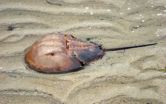(Press-News.org) Mummies from along the Nile are revealing how age-old irrigation techniques may have boosted the plague of schistosomiasis, a water-borne parasitic disease that infects an estimated 200 million people today.
An analysis of the mummies from Nubia, a former kingdom that was located in present-day Sudan, provides details for the first time about the prevalence of the disease across populations in ancient times, and how human alteration of the environment during that era may have contributed to its spread.
The American Journal of Physical Anthropology is publishing the study, led by Emory graduate student Amber Campbell Hibbs, who recently received her PhD in anthropology.
About 25 percent of mummies in the study dated to about 1,500 years ago were found to have Schistosoma mansoni, a species of schistosomiasis associated with more modern-day irrigation techniques.
"Often in the case of prehistoric populations, we tend to assume that they were at the mercy of the environment, and that their circumstances were a given," says Campbell Hibbs. "Our study suggests that, just like people today, these ancient individuals were capable of altering the environment in ways that impacted their health."
The study was co-authored by Emory anthropologist George Armelagos; William Secor, an epidemiologist at the Centers for Disease Control and Prevention; and Dennis Van Gerven, an anthropologist at the University of Colorado at Boulder.
"We hope that understanding the impact of schistosomiasis in the past may help in finding ways to control what is one of the most prevalent parasitic diseases in the world today," Campbell Hibbs says.
Schistosomiasis is caused by parasitic worms that live in certain types of freshwater snails. The parasite can emerge from the snails to contaminate fresh water, and then infect humans whose skin comes in contact with the water.
Infection can cause anemia and chronic illness that impairs growth and cognitive development, damages organs, and increases the risk for other diseases. Along with malaria, schistosomiasis ranks among the most socio-economically damaging parasitic diseases in the world.
As far back as the 1920s, evidence of schistosomiasis was detected in mummies from the Nile River region, but only in recent years did the analysis of the antigens and antibodies of some of the individuals become possible.
This latest study tested desiccated tissue samples from two Nubian populations for S. mansoni. The Kulubnarti population lived about 1,200 years ago, during an era when Nile flooding was at its highest average known height, and archaeological evidence for irrigation is lacking. The Wadi Halfa population lived further south along the Nile, about 1,500 years ago, when the average heights of the river were lower. Archeological evidence indicates that the Wadi Halfa used canal irrigation to sustain multiple crops.
The analysis of tissue samples showed that 25 percent of the Wali Halfi population in the study were infected with S. mansoni, while only 9 percent of the Kulubnarti were infected.
The standing water collected by irrigation canals is particularly favorable to the type of snail that spreads the S. mansoni infection. Another form of the disease, Schistosoma haematobium, is spread by snails that prefer to live in more oxygenated, free-flowing water.
"Previously, it was generally assumed that in ancient populations schistosomiasis was primarily caused by S. haematobium, and that S. mansoni didn't become prevalent until Europeans appeared on the scene and introduced intensive irrigation schemes," Campbell Hibbs says. "That's a sort of Euro-centric view of what's going on in Africa, assuming that more advanced technology is needed to control the elements, and that irrigation conducted in a more traditional way doesn't have a big influence on the environment."
Co-author George Armelagos is a bioarcheologist who has been studying ancient Nubian populations for more than three decades. Through extensive analysis, he and colleagues have shown that nearly 2,000 years ago the Nubians were regularly consuming tetracycline, most likely in their beer, at levels high enough to show they were deliberately brewing the antibiotic effects.
"The Nubians were probably in healthier shape than many other populations of their time, due to the dry climate, which would reduce their bacterial load, and because they were getting tetracycline," Armelagos says. "But the prevalence of schistosomiasis shown in this study suggests that their parasite load was probably quite heavy."
###
Emory University is known for its demanding academics, outstanding undergraduate experience, highly ranked professional schools and state-of-the-art research facilities. Perennially ranked as one of the country's top 20 national universities by U.S. News & World Report, Emory encompasses nine academic divisions as well as the Carlos Museum, The Carter Center, the Yerkes National Primate Research Center and Emory Healthcare, Georgia's largest and most comprehensive health care system.
Mummies tell history of a 'modern' plague
Analysis of ancient Nubian-era mummies finds new evidence that disease spread from altering environment
2011-05-23
ELSE PRESS RELEASES FROM THIS DATE:
Mechanism behind compound's effects on skin inflammation and cancer progression
2011-05-23
Boston, MA - Charles J. Dimitroff, MS, PhD and colleagues in the Dimitroff Lab at Brigham and Women's Hospital, have developed a fluorinated analog of glucosamine, which, in a recent study, has been shown to block the synthesis of key carbohydrate structures linked to skin inflammation and cancer progression. These findings appear in the April 14, 2011, issue of the Journal of Biological Chemistry.
Dr. Dimitroff and colleagues show for the first time that the fluorinated glucosamine therapeutic works not through direct incorporation into growing sugar chains as previously ...
Consortium identifies genome regions that could influence severity of cystic fibrosis
2011-05-23
CHAPEL HILL, N.C. – A team of researchers, including a number from the University of North Carolina at Chapel Hill School of Medicine, have pinpointed regions of the genome that contribute to the debilitating lung disease that is the hallmark of cystic fibrosis.
Their findings provide insight into the causes of the wide variation in lung disease severity experienced by CF patients. It also points the way to new diagnostic markers and therapeutic approaches for this and more common lung diseases such as COPD.
This study, which appears online Sunday, May 22, 2011 in ...
Quit Tea Natural Stop Smoking Aid Receives Professional Recommendations
2011-05-23
Quit Tea, the natural stop smoking aid, has received an official professional endorsement. "This is a good product I will continue to tell my clients about," says Leeanne Taylor, a licensed drug and alcohol counselor with a private practice in Bangor, Maine, who specializes in smoking cessation.
Ms. Taylor received free samples of Quit Tea as part of the Quit Tea LLC's local Maine smoking cessation professional detailing program. She said "since that time I have given clients a tea bag and the website so they could get some of their own. The majority of ...
Just 4 percent of galaxies have neighbors like the Milky Way
2011-05-23
How unique is the Milky Way?
To find out, a group of researchers led by Stanford University astrophysicist Risa Wechsler compared the Milky Way to similar galaxies and found that just four percent are like the galaxy Earth calls home.
"We are interested in how the Milky Way fits into the broader context of the universe", said Wechsler. "This research helps us understand whether our galaxy is typical or not, and may provide clues to its formation history."
The research team compared the Milky Way to similar galaxies in terms of luminosity--a measure of how much light ...
Common Jupiters?
2011-05-23
Freelance writer Robert Brault offers a metaphor for the night sky, "A trillion asterisks and no explanations." By supporting astronomers, the National Science Foundation (NSF) helps to provide explanations. A recent NSF- and NASA-funded study provides one more explanation.
Astronomers have discovered a new population of Jupiter-size planets floating alone in the dark of space, away from the light of a star. According to the scientists, these lone worlds were probably ejected from developing planetary systems.
The discovery is based on a joint Japan-New Zealand survey, ...
Mount Sinai researchers discover possible new target for sarcoma treatment and prevention
2011-05-23
Researchers from Mount Sinai School of Medicine have discovered a protein signaling pathway that becomes hyperactivated in human sarcoma cells, suggesting that medications to inhibit this pathway may be effective in the treatment of human sarcomas. The research is published in the current issue of the journal Cancer Cell.
A team of researchers led by Stuart Aaronson, MD, Jack and Jane B. Aron Professor and Chairman of the Department of Oncological Sciences at Mount Sinai School of Medicine, compared normal human mesenchymal stem cells to human sarcoma cells and found ...
American Community Television Calls on AT&T to Make PEG Channels Available to the Blind and Vision Impaired Community
2011-05-23
American Community Television (ACT) sent letters last Thursday to Randall Stephenson, the President of AT&T, and to Jacquelyn Brand, the chair of the AT&T Advisory Panel on Access & Aging, asking that AT&T deliver Public, Educational and Government (PEG) access channels the same as all other channels on the U-Verse system.
"AT&T's U-Verse platform discriminates against persons who are blind or visually impaired," said John Rocco, President of ACT. "We cannot access PEG channels through the Channel 99 on-screen menu."
Mr. Rocco, ...
Replacing the blue bloods
2011-05-23
The Food and Drug Administration requires every drug they certify to be tested for certain poisons that damage patient health. The current gold standard for this is the limulus amoebocyte lysate (LAL) assay that involves using the blood of horseshoe crabs, which strangely enough is blue, to test for endotoxin, a substance commonly associated with many symptoms caused by bacterial infections.
But researchers at the Department of Chemical and Biological Engineering at the University of Wisconsin-Madison have found what may be a more effective way to test for endotoxin that ...
Novel man-made material could facilitate wireless power
2011-05-23
DURHAM, N.C. – Electrical engineers at Duke University have determined that unique man-made materials should theoretically make it possible to improve the power transfer to small devices, such as laptops or cell phones, or ultimately to larger ones, such as cars or elevators, without wires.
This advance is made possible by the recent ability to fabricate exotic composite materials known as metamaterials, which are not so much a single substance, but an entire man-made structure that can be engineered to exhibit properties not readily found in nature. In fact, the metamaterial ...
Whataburger Introduces New Honey Mustard Chicken Club Sandwich
2011-05-23
Just in time for summer, Whataburger today announced the Honey Mustard Chicken Club, its newest menu item available for a limited time only. The new chicken sandwich - with a choice of grilled or crispy chicken -- is available Monday, May 23 at 3 p.m. through Monday, June 27 at Whataburger's 700-plus locations across 10 states.
The made-to-order Honey Mustard Chicken Club sandwich features a choice of Grilled Chicken or Whatachick'n filet, freshly chopped lettuce, tomato, bacon, Swiss American cheese and Honey Mustard sauce on a wheat bun. It is the newest addition to ...
LAST 30 PRESS RELEASES:
Tracing the quick synthesis of an industrially important catalyst
New software sheds light on cancer’s hidden genetic networks
UT Health San Antonio awarded $3 million in CPRIT grants to bolster cancer research and prevention efforts in South Texas
Third symposium spotlights global challenge of new contaminants in China’s fight against pollution
From straw to soil harmony: International team reveals how biochar supercharges carbon-smart farming
Myeloma: How AI is redrawing the map of cancer care
Manhattan E. Charurat, Ph.D., MHS invested as the Homer and Martha Gudelsky Distinguished Professor in Medicine at the University of Maryland School of Medicine
Insilico Medicine’s Pharma.AI Q4 Winter Launch Recap: Revolutionizing drug discovery with cutting-edge AI innovations, accelerating the path to pharmaceutical superintelligence
Nanoplastics have diet-dependent impacts on digestive system health
Brain neuron death occurs throughout life and increases with age, a natural human protein drug may halt neuron death in Alzheimer’s disease
SPIE and CLP announce the recipients of the 2025 Advanced Photonics Young Innovator Award
Lessons from the Caldor Fire’s Christmas Valley ‘Miracle’
Ant societies rose by trading individual protection for collective power
Research reveals how ancient viral DNA shapes early embryonic development
A molecular gatekeeper that controls protein synthesis
New ‘cloaking device’ concept to shield sensitive tech from magnetic fields
Researchers show impact of mountain building and climate change on alpine biodiversity
Study models the transition from Neanderthals to modern humans in Europe
University of Phoenix College of Doctoral Studies releases white paper on AI-driven skilling to reduce burnout and restore worker autonomy
AIs fail at the game of visual “telephone”
The levers for a sustainable food system
Potential changes in US homelessness by ending federal support for housing first programs
Vulnerability of large language models to prompt injection when providing medical advice
Researchers develop new system for high-energy-density, long-life, multi-electron transfer bromine-based flow batteries
Ending federal support for housing first programs could increase U.S. homelessness by 5% in one year, new JAMA study finds
New research uncovers molecular ‘safety switch’ shielding cancers from immune attack
Bacteria resisting viral infection can still sink carbon to ocean floor
Younger biological age may increase depression risk in older women during COVID-19
Bharat Innovates 2026 National Basecamp Showcases India’s Most Promising Deep-Tech Ventures
Here’s what determines whether your income level rises or falls
[Press-News.org] Mummies tell history of a 'modern' plagueAnalysis of ancient Nubian-era mummies finds new evidence that disease spread from altering environment






